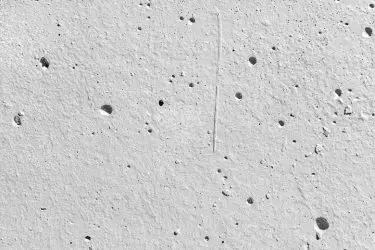Gray concrete is everywhere. It lacks real beauty and generally doesn’t fit with most color schemes or decorative touches, which is why concrete staining is preferred by many. Staining will help add color to your home or concrete area.
Choosing which type of acid stain you would like to use on your concrete will be dependent upon several factors. These will include the color of your choosing, the placement (indoor or outdoor) of your concrete, and the safety and effect on the environment.
Learning about different types of stain, how it works, and other helpful tips will all aid in selecting the perfect stain for your concrete area.

Table of Contents
Different Types of Stains For Concrete
Acid Stains
Acid stain sinks deep into the pores of the concrete and causes a chemical reaction between the muriatic acid and lime. This reaction leaves the concrete with a permanent stain of color. The liquid contains many minerals and acid to get a response that changes the entire look of your concrete.
Acid stains usually come in earth-based colors. The colors may not match your preference sometimes, which is why we will also mention water-based stains and solvent-based stains.
Normally, the colors acid stain come in are tan, brown, terracotta, and soft blue-green. There are obviously many shades within these colors, but those are the basic colors that can be found in acid stains.
Water Based Stains
Unlike acid stains, which sink deep into the concrete to penetrate it with color, water-based stains contain particles that are too big to be absorbed and therefore create a thin layer on the surface.
Water-based stains are more closely compared to paint meant to be used on concrete. Their lack of permeability makes them more malleable and easier to control the outcome. They create more of a thin layer over your concrete, but they work well outside if protected because they are UV stable.
A wide range of colors is available, including more vibrant ones. They have shades of black, white, and even yellow, orange, or dull shades of red.
Solvent Based Stains
Often, these stains are used as a way to change or tint the color of a pre-existing coating. It is important when you are doing this to ensure that the coating and the stain will not have a chemical reaction that ruins the color altogether.
When doing this, it can be hard to maintain the color because as the coating comes off, so will the color, making it look patchy and difficult to fix.
Solvent-based stains can also contain powdered dyes, which come in a variety of colors like bright green, blues, yellows, reds, or pinks. This kind of dye/stain dries really quickly and provides lasting color and vibrancy.
Tips for Choosing a Stain Color
Choosing a color, as you can tell from all the sections thus far, is ultimately one of the main purposes of staining concrete in the first place. Maybe your house is going with a rustic theme or a modern one. Either way, coloring your concrete can change the entire mood and feel of the home.
Because oftentimes the colors of the stains are limited, you have the option to mix colors together.
Either you do this by applying a second coat of stain in another color to give it another look, or you mix the colors before you stain your concrete the first time. Colors normally come in a shade of their original color and lack vibrancy.
Testing colors can also be really important. You want to make sure that it turns out the way you want. While going for a particular look and color is the goal, mixing the stains can be a tricky process.
It may lead to other reactions which is why it is recommended to first try it on a small section of the floor before applying it to the whole surface.
Some of the most popular colors used to stain and etch designs into the concrete are the following:
- Gray
- Black
- White
- Blue
- Brown
- Terracotta
- Walnut
- Red
- Charcoal
- Tan
- Green

Remember That Acid Staining Concrete Is Permanent
While water-based stains and solvent-based stains sit upon the surface of your concrete, it is important to remember that true acid stains sink into that top layer of your concrete, and are therefore very hard to change or get rid of.
Obviously, you could tile or carpet over the concrete, or rip it out completely, but once the stain is there it becomes a hard task to remove it.
Choosing the correct color becomes even more important when you realize that its importance will last for years to come, through all the new trends, ideas, and home designs.
It being permanent is also a really good thing though!
The wear and tear that often deteriorate surface stains do not have as much of an effect on the acid stains because they have penetrated your concrete. Colors and designs will last a long time on concrete by using an acid stain.
What is Acid Staining
Acid stain works by penetrating the concrete surface and allowing a chemical reaction. It etches into the surface slightly and allows the metallic salts within the acid to penetrate much more easily. The reaction takes place between the hydrated lime or calcium hydroxide and the concrete. The stain then becomes a permanent part of the concrete.
Because of this process, it allows for the acid stain to create a variety of designs and unique looks. It is very easy to apply, dries evenly, and adheres well to the surface. It creates a rich, dark color that doesn’t fade over time like many other options.
How To Acid Stain Concrete
- Prepare the Surface & Clean the Concrete – Make sure the area is clear of any debris, oil, dirt, mud, sealers, other stains, paint, lubricants, lint, and dust. The stain cannot adhere to the concrete if there are other chemicals or materials present. Cleaning it could include a pressure washer, broom, or vacuum, all of which will help to attain the cleanness desired. Another important preparation is to cover or tap over anything you do not want to be exposed to the acid stain.
- Apply the Acid Stain – Don’t forget when you are applying this stain, that it is an acid, and a face mask, gloves, and goggles should be worn. Proper ventilation is also important! Put the acid stain into a pump sprayer of some kind and grab a friend. As you follow a general pattern of movement while spraying over the entire floor or surface, another should follow behind brushing the acid into the surface. Go over any uneven spots.
- Neutralize the Stain – Once the floor has darkened to your desired shade, grab a mop and scrub brush to get off the excess acid. It is best to mop over it with a solution of ammonia and water. Rinse it off about 2 or 3 times until the water coming off is clean. Afterward, let it dry for a day or more.
- Seal the Concrete – In essence, this last step is just applying a clear coat. It smooths over the stain and gives it a more wet look. Apply the sealer with a roller and be sure that it is even across the entire surface. Once again, let the sealer dry.
Re-staining
If you end up not liking the stain you applied or are just in need of a change, you can re-stain your concrete through a variety of options. It is hard to make the color lighter or softened. Darkening your concrete is much easier.
Oftentimes, because of this problem, contractors will use diluted stain repeatedly until they get to the desired shade.
Water-based solvents and dyes are a great way to spice up a color that has faded or become blotchy, and often this can be applied over a stain. Sealers though should always be removed before adding more stain or dye.
Other Tips Before Acid Staning a Concrete Floor
Choosing a stain can be really important to your project, but there are a variety of other important tips and tricks to consider while engaging in this process, including the prices.
- The cost of acid staining concrete floors is around $2 to $6 per square foot.
- Make sure that the concrete is fully cured before you begin applying stains. This is normally a 28 to 30-day process from the time new concrete is poured.
- ALWAYS seal the concrete after it has been stained.
- Once you gain a greater understanding of how each stain works and bonds chemically, you can use acid and water-based stains together to get achieve a desired color or shade.
- You will need to know how much stain to get. Acid stains will cover 200 to 400 square feet per gallon on avarage. Water-based stains, on the other hand, will cover just a bit more (about 250 to 450 square feet per gallon).
- Acid stain dries in about 20 minutes, but it is recommended that you let it dry for up to 24 hours. Allow for two hours between coats if you’re doing multiple coats.




